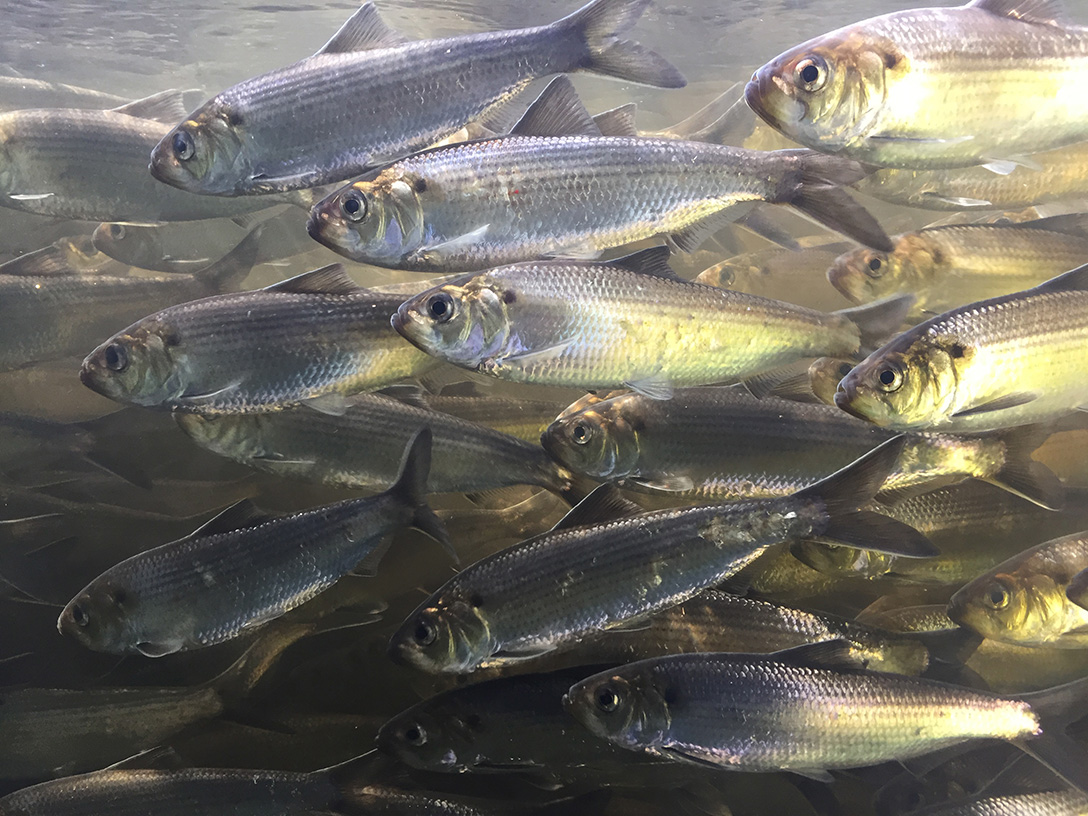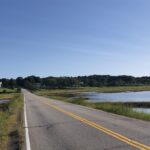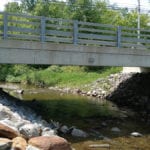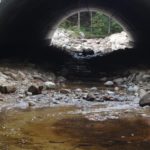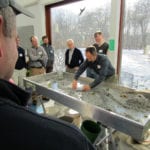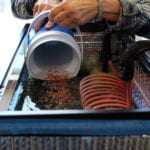
Stream Smart works with contractors, landowners, and other professionals responsible for road-stream crossings to construct culverts that maintain fish and wildlife habitat while protecting roads and public safety.
Latest News | Partners and Supporters | Project Planning and Support | Workshops | Resource Library
In 2011, Maine Audubon and partners launched Stream Smart. Since the start of the project, we have hosted workshops and field trainings for over 1,000 people across the state, reconnecting hundreds of miles of stream habitat for wildlife. Stream Smart road crossings let the stream act like a stream and make the road invisible to the stream.
View the Stream Smart Handout and Maine Stream Crossings: New Designs to Restore Stream Continuity fliers to learn more.
Why are streams important?
Streams are important habitat for fish and other wildlife. Eighty-five percent of wildlife species either live in or use riparian (water-related) habitats throughout the year to breed, travel, and find food and water.
In Maine, brook trout, Atlantic salmon, river otters, and other wildlife get “stuck” at decaying, undersized stream culverts. One of the least visible elements of our built infrastructure, stream culverts allow roads to cross Maine’s vast network of streams. Surveys show that up to 90 percent of Maine culvert crossings make movement difficult or impossible for wildlife at least part of the year. When wildlife habitat is fragmented like this, it can result in population declines and the loss of species.
View the Value of Stream Smart Road Crossings Presentation for an overview.
Why are Stream Smart crossings a wise investment?
Stream Smart road crossings last longer than traditional culverts and reduce maintenance costs, saving money in the long term. Stream Smart crossings can typically withstand flooding and can better weather the increasingly intense storms we are experiencing without damaging the road.
Latest News about Stream Smart and Habitat Connectivity
News release (December 6, 2023): The Maine Department of Agriculture, Conservation and Forestry’s Maine Forest Service is pleased to announce the launch of a new statewide education program, the Adaptive BMP Cooperative (ABC), designed for all those involved in Maine’s forest products industry. ABC will make it easier for forestry and logging professionals to find recognized, quality BMP training programs and identify professionals who have participated in those training programs.
Grant announcement (December 1, 2023): The Maine Department of Transportation (MaineDOT) is seeking applications for the Municipal Stream Crossing Program (grant program) to provide competitive grants that help fund the upgrade of municipal culverts at stream crossings with the goal of improving fish and wildlife habitat and community safety. Applicants may request up to $200,000 for projects that include scoping, design, and construction and must include a minimum of $5,000 of local match. Applications must be received by January 19, 2024, at 11:59 p.m. local time to be considered. Training and technical assistance opportunities are available in support of project proposals with The Nature Conservancy and Maine Audubon. For more information, please reach out to Christan Fox (christian.fox@TNC.ORG) or Sarah Haggerty. Please refer to the “Municipal Stream Crossing Grant Program” Request for Applications (RFA) posted on MaineDOT’s grants page. Any and all questions should go to Taylor LaBrecque at MunicipalStreamCrossing.MDOT@maine.gov.

